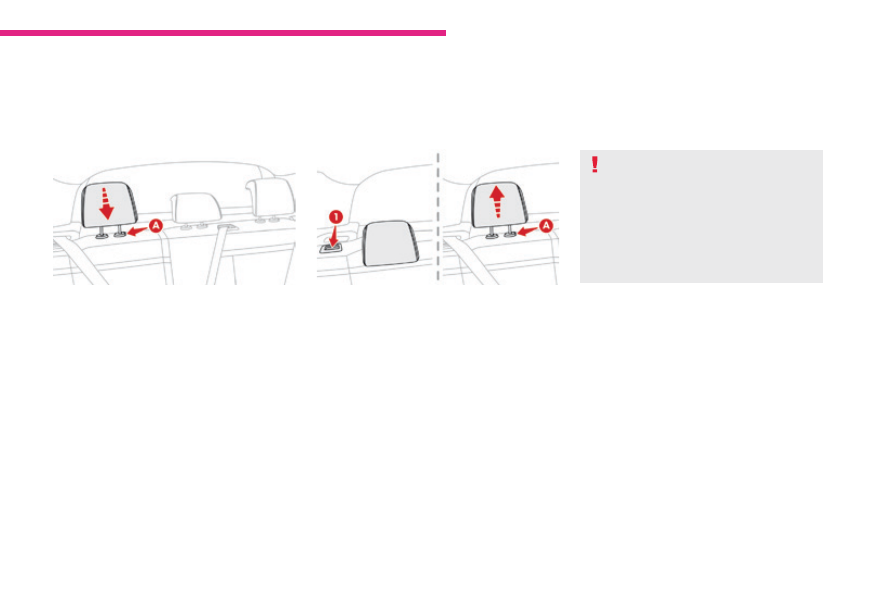Citroen C3 (2017 year). Manual - part 6

79
3
Ease of use and comfort
B618_en_Chap03_Ergonomie-et-confort_ed01-2016
Rear seats
Bench seat with fixed cushions and split folding backrests (2/3-1/3) to adapt the boot load space.
They have two positions:
- a
high position, for when the seat is in
use:
F
pull the head restraint fully up.
- a
low position
, for stowing, when the seat
is not in use:
F
press the lug A to release the head
restraint and push it fully down.
Never drive with passengers seated at
the rear when the head restraints are
removed; they must be in place and in
the high position.
The head restraint for the centre seat
and those for the outer seats are not
interchangeable.
To remove a head restraint
:
F
release the backrest using the control 1,
F
tilt the backrest slightly forwards,
F
pull the head restraint as far up as it will go,
F
press the lug A to release the head
restraint and remove it completely,
F
stow the head restraint.
Rear head restraints
The rear head restraints can be removed.
To refit a head restraint:
F introduce the rods of the head restraint into
the guides of the corresponding seat backrest,
F
push the head restraint down as far as it will go,
F
press the lug A to free the head restraint
and push it fully down.